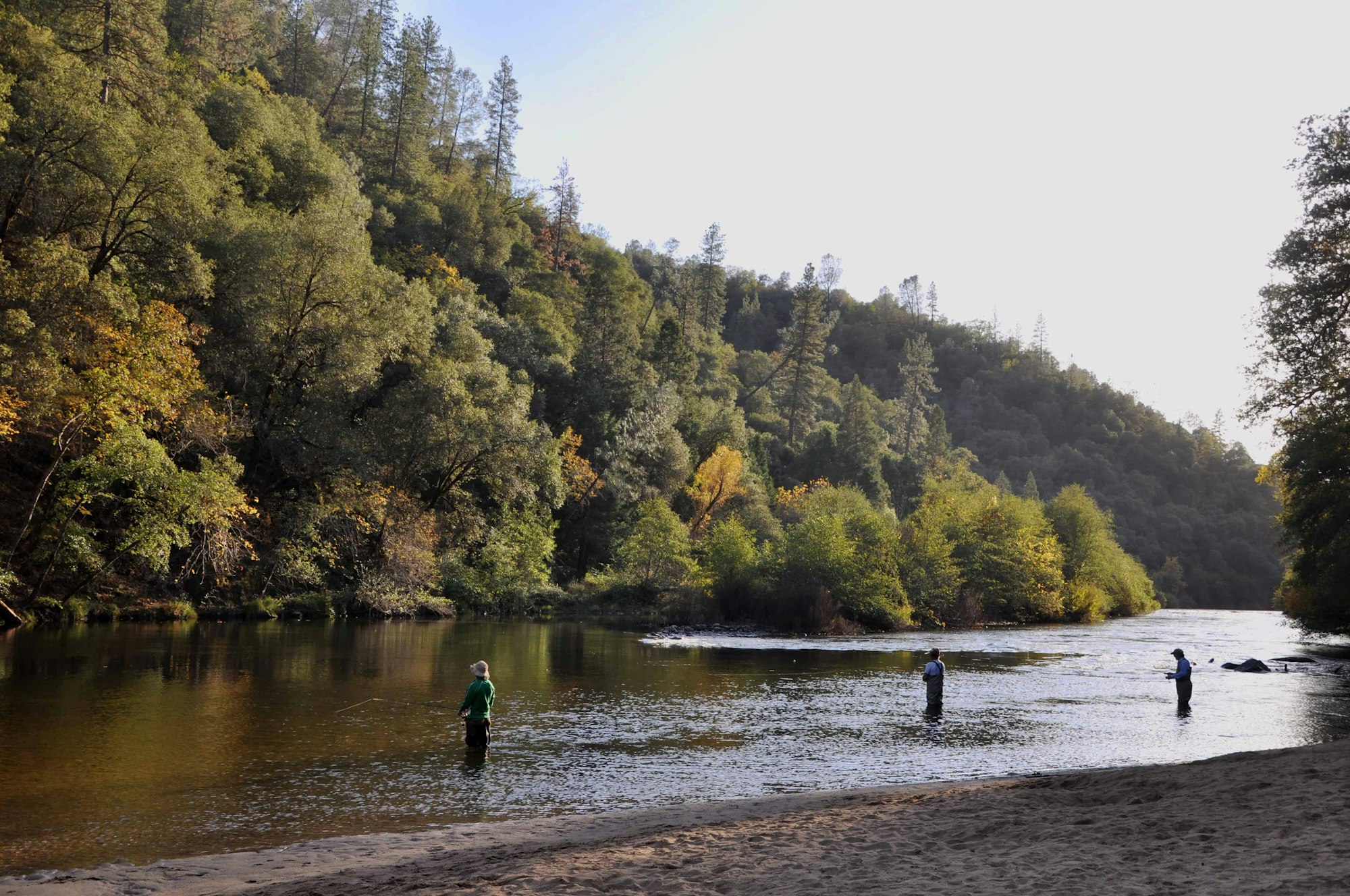Mokelumne River becomes California’s newest Wild and Scenic River - June 27, 2018
Collaborative effort permanently protects the environment, communities, water supply and hydropower generation
Thirty-seven miles of the North Fork and main stem of the Mokelumne River running through Amador and Calaveras counties became California’s 12th California Wild and Scenic River on June 27, 2018, when Governor Edmund G. Brown signed SB 854. The legislation was passed by the State Assembly and Senate on Thursday, June 14.
The Mokelumne language included in the bill embodies recommendations made by the California Natural Resources Agency’s Mokelumne River Wild and Scenic River Study Report, which was released in mid-April 2018. The study recommendations and legislation – which included five special provisions to protect local water supplies – were broadly supported by a coalition of interests including river conservation, fish and recreation organizations; businesses and tourism organizations; foothill and East Bay water agencies; local water agencies; and Amador and Calaveras counties.

“This legislation is a true ‘win-win.’ It protects the Mokelumne River water supply that Amador County residents depend on for nearly all of our public water,” said Amador Water Agency Board President, Art Toy. “At the same time, it protects the river environment and recreation.”
“This is a landmark achievement,” said Scott Ratterman, Calaveras County Water District Board president. “We are proud to have reached a consensus with all stakeholders that protects local water rights and the river for future generations.”
“I can’t begin to tell you how happy we are,” said Katherine Evatt, board president of the Jackson-based Foothill Conservancy. “It’s a tremendous day for our community. People really love the Mokelumne. We have worked for decades to ensure that this beautiful river is protected for generations to come, and finally, the upper Mokelumne is a California Wild and Scenic River.”
The Mokelumne was found eligible and suitable for state Wild and Scenic designation because of its extraordinary scenic and recreational values. The river provides water for residents and agriculture in foothill counties, Central Valley agriculture and communities, and residents of the East Bay. The Mokelumne is also home to an extensive PG&E hydroelectric project. Water and power uses and operations will not be affected by the designation, which bars new onstream dams on the five designated river segments.
“After many years of debate, Californians may now enjoy the extraordinary scenic and recreational values of this magnificent river, with the knowledge that it is permanently protected because conservationists, water agencies, local government officials, and the California Natural Resources Agency were able to ultimately work together to permanently protect the river for present and future generations,” said Eric Wesselman, executive director of Friends of the River. “Californians, please welcome the Mokelumne as our state’s newest wild and scenic river.”
“We are proud to have been part of this consensus effort to add the Upper Mokelumne River to California’s Wild and Scenic Rivers System,” said Lesa McIntosh, East Bay Municipal Utility District board president. “This designation is a historic, once- in-a-generation opportunity. The Mokelumne is a treasured resource that provides precious water supplies for local communities and the East Bay. With these new protections, the river will continue its vital role in sustaining our communities and be a jewel that present and future generations can enjoy.”
For more information, contact:
- Gene Mancebo, Amador Water Agency: (209) 223-3018
- Joel Metzger, Calaveras County Water District: (209) 754-3123
- Donna Leatherman, Calaveras Public Utility District: (209) 754-9442
- Steve Fredrick, Jackson Valley Irrigation District: (209) 274-2037
- Alison Kastama, East Bay Municipal Utility District: (510) 287-0111
- Katherine Evatt, Foothill Conservancy: (209) 223-3508
- Steve Evans, Friends of the River: (916) 442-3155
End.
Photos courtesy the Foothill Conservancy.
